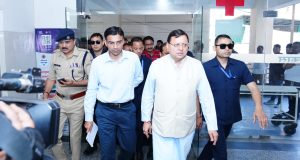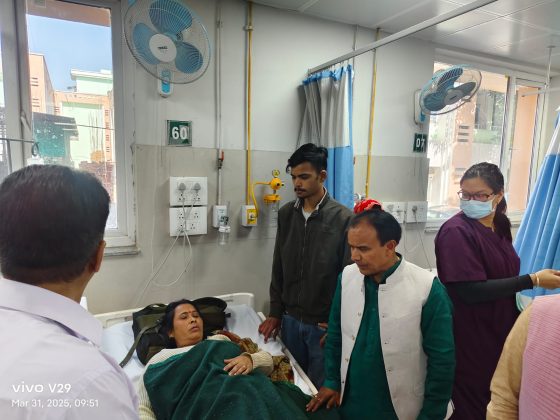DAINIK NATION BUREAU
The Economic Survey-2017-18 has projected a recovery in the growth rate of the economy to 7-7.5 per cent in the next fiscal as the impact of demonetisation and Goods and Services Tax (GST) wanes. Even they have identified employment, education and agriculture as core focus areas.
The survey presented in Parliament by Finance Minister Arun Jaitley two days before the government’s fifth and final Union Budget has pegged the growth rate for the current fiscal at 6.75 per cent as recovery picked up in the second half.
The survey document for this year comes in pink colour, which highlights gender issues against the backdrop of development. It has highlighted that against the emerging macro-economic concerns, policy vigilance will be necessary in the coming year, especially if high international oil prices persist or elevated stock prices correct sharply, provoking a “sudden stall” in capital flows.
On the agenda for the next year, the survey has listed supporting agriculture, stabilising the GST, completing the twin balance sheet (TBS) actions, privatising Air India, and staving off threats to macro-economic stability. Calling for the need to revive investments rather than savings, the survey seeks to achieve economic growth on the strength of the only two truly sustainable engines — private investment and exports.
The survey has also called for utmost priority to social infrastructure like education, health and social protection to engineer an inclusive and sustainable growth. It has called for timely dispute resolution, including tax litigation. All these pointers in the survey indicate that the Budget is likely to focus on these areas in the final year before the 2019 General Election.
Chief Economic Adviser Arvind Subramanian said there has been a boost in registered direct and indirect taxpayers. This includes a 50 per cent increase in unique indirect taxpayers under the GST compared to the pre-GST system and an addition of about 1.8 million individual income tax filers since demonetisation in November 2016.
The survey mentioned that the sum of all government efforts increased income tax collections, thus far, between Rs 65,000 and Rs 90,000 crore. These numbers imply a substantial increase in reported incomes (and hence in formalisation) of about 1.5 per cent to 2.3 per cent of the GDP.
Girish Vanvari, national head of tax, KPMG (India), said it will be interesting to note how the government responds to the popular expectations of lower tax rates at individual and corporate tax levels especially in the light of an increasing tax base post GST and demonetisation.
One of the ideas mooted in the survey is the “technology of GST Council”. Subramanian said the GST Council is akin to “technology of reform”, the principle needs to be applied for reform in many other areas.
For example, the “cooperative federalism technology” of the GST Council could be used to create a common agricultural market, integrate fragmented and inefficient electricity markets, solve interstate water disputes, implement direct benefit transfers (DBT), make access to social benefits portable across states, and combat air pollution.
FISCAL INDICATORS AND FORECAST
Inflation
Average retail inflation declined to six-year low of 3.3 per cent in 2017-18, with the economy moving towards a more stable price regime
Tax disputes
Separate HC Benches recommended for tax cases to prune pendency. Claims for indirect and direct tax in litigation stood at Rs 7.58 lakh cr by March 2017
Employment
Real estate and construction sector will create over 15 million jobs over next five years despite signs of stress in the segment in last few quarters
- Demonetisation has encouraged financial savings
- Tax collection by states, local govts lower than those in other federal countries
- Insolvency Code being actively used to resolve NPA woes
- Policy vigilance needed if oil prices stay high or stock prices correct sharply
- Foreign exchange reserves grew by 14.1% from end of Dec 2016 to end of Dec 2017
- Climate change has had an adverse impact on agricultural yields
- Swachh Bharat initiative improved sanitation coverage in rural areas from 39% to 76%
- Indian society exhibits a strong desire for a male child
- Survey in pink colour to highlight gender issues
CEA Arvind Subramanian expressed hope that at least one or two states will implement the idea of universal basic income (UBI) in the next two years. Subramanian in the Economic Survey 2016-17 had mooted the idea of universal basic income or a uniform stipend paid to every adult and child, poor or rich. “I can bet… within the next two years, at least one or two states will implement UBI,” Subramanian said
 Dainik Nation News Portal
Dainik Nation News Portal




